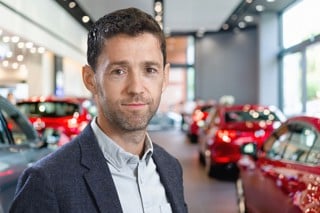Last month, Zoopla's founder launched Cazoo – a doorstep car delivery service offering free seven-day trials, which has all the hallmarks of being the automotive industry’s answer to Amazon.
It’s simply the latest challenge to the dealership model.
According to the research, 70% of motorists are open to purchasing a vehicle online, rather than through a dealership, and with the experts predicting that in the next decade new-vehicle profits are set to drop as much as 17% for franchised dealers, it’s clear that the traditional sales model is under threat.
The level of disruption we’re seeing in the automotive category is similar to the one we’ve seen affect physical retail.
And, just in the same way that stores have had to reinvent themselves to meet the challenges posed by e-commerce and the expectations of the modern consumer, the dealership of the future will need to shift its positioning to offer buyers something that they can’t get anywhere else.
Understand why people are coming through your doors
If a car dealership is looking to futureproof itself, then it needs to understand why people are coming through its doors in the first place.
20 years ago, prospective car buyers were visiting dealerships more regularly. They were going to the sites with the intention of making purchases, and, in many cases, to discover more about the cars they were considering purchasing.
These days, people do the bulk of their research online, and they are no longer necessarily visiting dealerships for the traditional reasons.
With sites like webuyanycar.com making it easy to understand trade-in value, and price-comparison sites like CarWow making finding the best deal as easy as quite literally clicking a button, many people are using their dealership experience to scout out more about the cars, ahead of making the purchase themselves online.
It’s a problem that retailers were calling ‘showrooming’ not that long ago.
The reaction of many of the automotive brands has been to follow another trend in retail - the pop-up.
We have seen Volvo choose to launch new models at crowded shopping centres instead of showrooms or dealerships, whilst the likes of Jeep and Porsche have creatively used pop-ups to further champion their USP and target high-footfall areas where people are spending their time.
The dealership model needs to evolve in line with these shifting consumer expectations, and to do this, it needs to acknowledge the fact that all buyers have three types of budget: money, time and frustration.
Ecommerce platforms like Cazoo look will offer car buyers a level of speed and convenience that dealerships may never be able to replicate.
This, coupled with the post-ownership mindset, means that the traditional car selling experience simply isn’t going to cut it.
However, in place of speed and convenience, there’s a real opportunity for dealerships in the ‘time’ budget, if they can redefine value and experience.
Redefine what success looks like
In retail ‘value’ is no longer simply price x quality, but a more complex equation including convenience and experience, and we’re seeing an evolution of the role of the physical store, and how its success is being measured.
For decades, these physical locations have been judged solely on the basis of whether or not they sell products in store.
Whereas now, in our omni-channel world, they’re being judged by whether or not they can become brand-building, ‘destination’ locations for shoppers, with some going further to measure attribution in similar ways to on-line media.
We should expect to see a similar shift in mindset happening in the dealership space. Instead of these sites being all about the hard-sell, the successful dealerships of the future will look to offer more of a concierge style, ‘assisted sell’ service to their visitors.
It’s likely that the future will comprise a combination of flagship experiences, retail spaces, and pop-ups, and this will mean a significant shift for the legacy dealership model.
How will the traditional commission model, where car salespeople pretty much live or die by the onsite sales they make, need to adjust to cater for this ‘destination’ mindset?
What needs to be done to connect the dealership and online journeys – so dealerships can be judged and measured for the role they have played in achieving the final sell?
Becoming a ‘destination’ location
When it comes to elevating the dealership into a destination, technological innovations have a key role to play. Sensors, interactive screens and technologies, including voice and ‘lift and learn’, all add to the experience for the visitor.
The ‘service destination’ is open for reinvention, as the next generation of vehicles will become technology and data platforms in peoples mobile lives, and we should learn from the way that we have seen the likes of Apple offer value to its shoppers at every stage of the consumer journey – even after the purchase has been made.
Ultimately though, if the dealership of the future wants to remain relevant, then it will have to reinvent itself to become a retail destination and curate car communities, as a way to boost footfall into their stores.
New business models, like subscription, are an opportunity to reinvent the driving or car club, whilst traditional models will need to evolve and offer more ‘everyday’ reasons to visit, especially for those dealers smart enough to see opportunity in charging.
If the dealership of the future is able to offer this level of service and value, then it will ensure that people will keep coming through its doors time and time again, just like those retailers who are reinventing themselves on our high-streets today.
Author: Simon Hathaway, managing director EMEA, Outform


















Login to comment
Comments
No comments have been made yet.